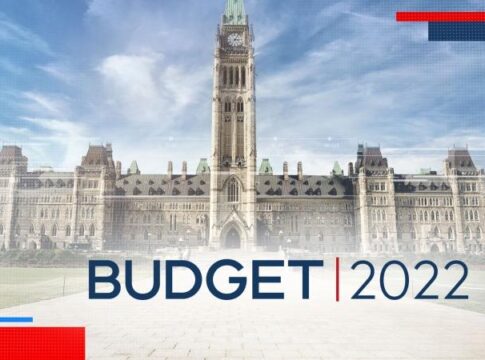A Guide to Compliance Carbon Credit Markets
Compliance Carbon Credit Market Overview
The carbon market can be complex and a simple way to understand it is to
separate the two major sectors – Voluntary Markets and Compliance Markets.
This guide focuses on Compliance Carbon Markets, also known as Emissions Trading Systems (ETS).
After reading this, you’ll gain a basic understanding of how Compliance
Markets function, and how to invest within the space.
Executive Summary
1. Compliance Carbon Market Landscape
2. The European Union ETS
3. The California Global Warming Solutions Act
4. China’s Carbon Compliance Markets
5. Analysis of Risks / Challenges to Major ETS
6. Investing in the Compliance Carbon Credit Markets
Compliance carbon credit prices are largely driven by government policy.
Government strategy will dictate maximum emission limits (otherwise known
as allowances, or credits).
Carbon emitters buy or sell carbon credits based on emissions generated in
relation to their allowance limits.
If they are under their emissions limit, they sell their excess allowances.
If they are over their limit, they buy to cover the shortfall.
Compliance Carbon Market Landscape
The value of the global carbon credit market reached ~$850 billion in 2021,
a 164% increase from 2020.
Currently, there are three major Emissions Trading Systems around the
world. They are:
European Union’s Emissions Trading System (EU)
The California Global Warming Solutions Act (USA)
The Chinese National Emission Trading System (China)
The picture below is a global ETS map that shows the current landscape of
the compliance credit market.
Figure 1: Global ETS Map of Current Compliance Credit Market Landscape
So, let’s break down each major compliance credit market…
Starting with the European Union’s Emissions Trading System (EU ETS) –
which accounted for 90% of the global compliance market.
The European Union ETS
The EU ETS was the first ETS created in the world, operating since 2005. It
is the most liquid carbon futures exchange globally.
In the last 5 years, the EU carbon allowance futures are up over 1,400%,
and up ~270% in the last 3 years alone. As such, it’s one of the
top-performing asset classes worldwide over that period.
Figure 2: European Union Allowance (EUA) Futures Price Chart
EU ETS jurisdiction covers the 27 EU states and 3 European Free Trade
Association states – Iceland, Liechtenstein, and Norway.
The total GHG emissions in this jurisdiction amount to 3,893 mega-tons
(Mt) per year, making it the second-largest ETS in the world.
The sectors regulated under the EU ETS during its first compliance phase were:
Power stations and other combustion installations with >20MW thermal
rated input
Industries including oil refineries, coke ovens, and iron/steel plants
Operations that produce cement, glass, lime, bricks, ceramics, pulp,
paper, and cardboard
But there’s only one additional sector regulated during the EU ETS’s second compliance phase:
Aviation (>10,000 tons CO2/year for commercial aviation; >1,000
tons CO2/year for non-commercial aviation)
Lastly, under its third compliance phase, the additional sectors
regulated under EU ETS were:
Carbon capture and storage installations
Production of petrochemicals, ammonia, nonferrous and ferrous metals,
gypsum, aluminum, as well as nitric, adipic, and glyoxylic acid
In total, there are 10,569 power plants and manufacturing facilities that
participate in the EU ETS. These entities have a commitment to:
(1) Reduce GHG emissions to at least 55% below 1990 GHG levels by 2030
(2) Achieve net-zero GHG emissions by 2050
As for the price, carbon on the EU ETS is priced at USD ~$80 per ton.
The EU ETS has collected USD $80.7 billion since inception, with USD
$21.8 billion in 2020 alone.
The California Global Warming Solutions Act
This ETS has been operating since 2012 and its jurisdiction covers
California only.
The overall GHG emissions in this jurisdiction amount is 425 million tonnes (Mt) per year.
There are several sectors regulated under the California ETS during its first phase. They were:
(1) Large industrial facilities (cement, glass, hydrogen, iron and steel,
lead, lime manufacturing, nitric acid, petroleum and natural gas systems,
petroleum refining, and pulp and paper manufacturing)
(2) Electricity generation
(3) Electricity imports
(4) Other stationary combustion
(5) CO2 suppliers
While the following sectors were added during its second phase:
(1) Suppliers of natural gas
(2) Suppliers of certain distillate fuel oils
(3) Suppliers of liquid petroleum gas
(4) Suppliers of liquefied natural gas
There are 330 registered entities participating in the California ETS,
which equates to more than 550 facilities. They commit to:
(1) Return to 1990 GHG levels by 2020
(2) 40% reduction from 1990 GHG levels by 2030
(3) Achieve carbon neutrality by 2045.
The current price for carbon under the California ETS is USD ~$30 per ton.
The California ETS has collected USD $14.24 billion since inception,
including USD $1.7 billion in 2020 alone.
China’s Carbon Compliance Markets
Contrary to popular western narratives, the Chinese are serious about
growing their climate-related ambitions. The China National ETS began its operation in 2021.
Its jurisdiction covers all of China. This national ETS expanded on
successful pilots in eight major regions between 2013 and 2016. It operates
on the Shanghai Environment and Energy Exchange (SEEE).
The overall GHG emissions in this jurisdiction amount to 12,301
mega-tons (Mt) per year.
This dwarfs the EU ETS, which has been operating for nearly 20 years.
The only sector regulated in the China ETS is the power sector. However,
the sector scope is expected to expand to cover seven additional sectors.
These are petrochemical, chemical, building materials, steel, nonferrous
metals, paper, and domestic aviation.
There are 2225 registered entities that participate in the China ETS, with
a commitment to:
(1) Reduce carbon emissions per unit of GDP by 18% compared to 2020 levels
by 2025
(2) Reach peak CO2 emissions and lower CO2 emissions per unit of GDP by
over 65% compared to 2005 by 2030
(3) Achieve carbon neutrality by 2060
The current price for carbon on the China ETS is USD ~$9 per ton.
Other compliance credit markets (ETS) that exist today are the Korean ETS,
the Kazakhstan ETS, the New Zealand ETS, the Japan ETS, the Canada ETS, and
the Mexico ETS.
These ETS were not covered because they are not liquid, and are very
difficult for a typical investor to gain exposure to.
Analysis of Risks / Challenges to Major ETS
The risks to compliance carbon credit markets for an investor are two-fold.
The first risk is tied to policy change/error. Policymakers aim to hold carbon prices
relatively stable. If the price is too low, investors are not incentivized
to finance ‘green projects’ which generate credits. If the price is too
high, entities regulated on the compliance side may experience a slowdown
in growth, which is generally bad for the economy.
The second risk is tied to geopolitical tensions and their spillover impacts on various
commodity markets. Here is one example of each risk.
Example #1: Policy Change / Error and Market Response
During the Shanghai Emissions Pilot, the Shanghai government did not
provide policy detail about the next compliance cycle following 2015.
As a result, the price of carbon fell more than 50% from ~10 yuan down
to ~5 yuan.
In May 2016, the Shanghai Municipal Development and Reform Commission
issued detailed clarifications, specifically around the allowance carryover
policy from the previous compliance cycle.
The carbon price on the Shanghai ETS ballooned to nearly 30 yuan per ton
over the next 7 months once the market gained this policy clarity. Below
you’ll see the month-over-month price trend during this policy change.
Figure 1: Carbon Price during Shanghai Emissions Pilot 2013-2015 (Yuan
per ton)
Example #2: Geopolitical Tensions and Market Response
KRBN, the largest Carbon ETF in the world, experienced substantial price
volatility between late February and early March 2022.
The Russia / Ukraine conflict forced markets to price at the risk of a
geopolitical landscape that would decrease the availability of critical
energy resources.
As a result, commodities such as oil experienced a drastic price increase.
The EU energy markets are tight on supply and they are heavily dependent on
Russian oil/natural gas exports.
The scramble to secure critical ‘dirty’ energy forced the EU ETS market to
price in the potential for non-enforcement of the ETS for some
participating entities.
Additionally, the EU carbon border tax on emissions produced from exports
is set to begin in mid-2022. If Russia/EU trade were to continue as normal,
Russian entities could hedge their EU carbon border tax bill by holding EU
ETS carbon credits.
EU sanctions on Russian assets/exports would eliminate trade between the
countries. This particularly includes the ability or need for Russian
entities to hold EU ETS carbon credits.
Investing in the Compliance Carbon Credit Markets
Diversification is critical to investing in carbon markets. Some of the
opportunities to diversify in this market are:
Internationally (California ETS vs EU ETS)
Across compliance cycles within an ETS (EU ETS 2022 futures vs EU ETS
2023 futures)
Compliance vs Voluntary credits (carbon allowance futures vs company
who generates credits)
Diversifying amongst compliance / voluntary credits is the most important.
If you were bullish on gold, would you only buy physical gold?
Of course not.
You’d buy physical gold and a basket of gold miners who had stronger
outlooks for growth relative to their competitors. Carbon credits are no
different.
The post A Guide to Compliance Carbon Credit Markets appeared first on Carbon Credits.



